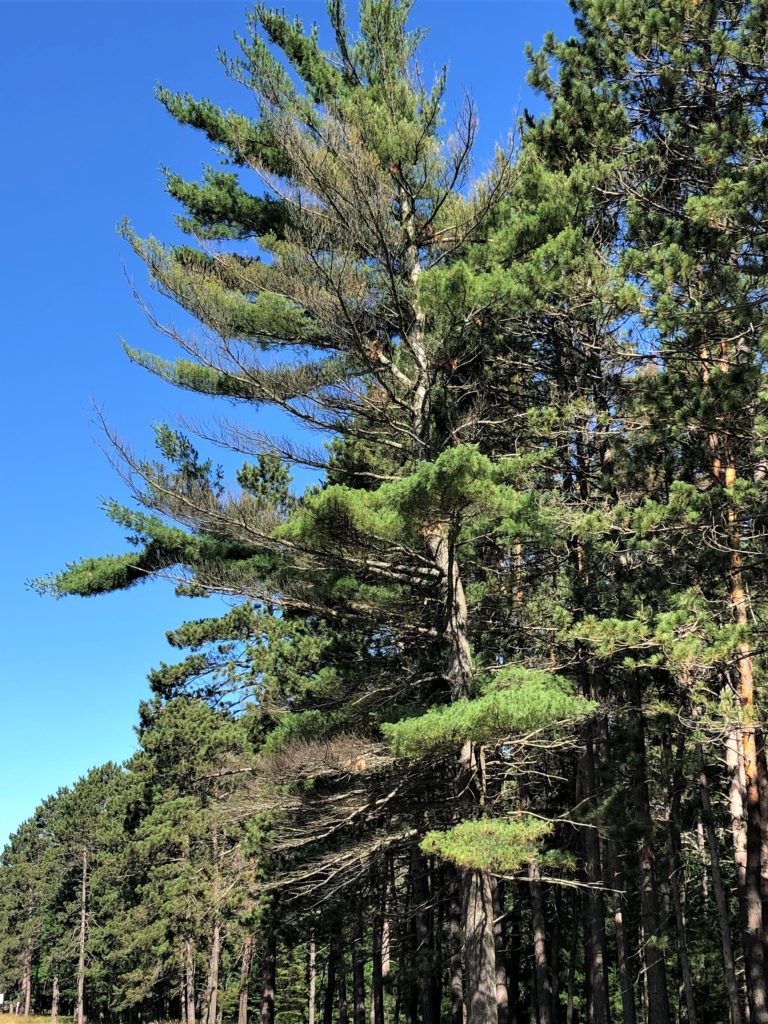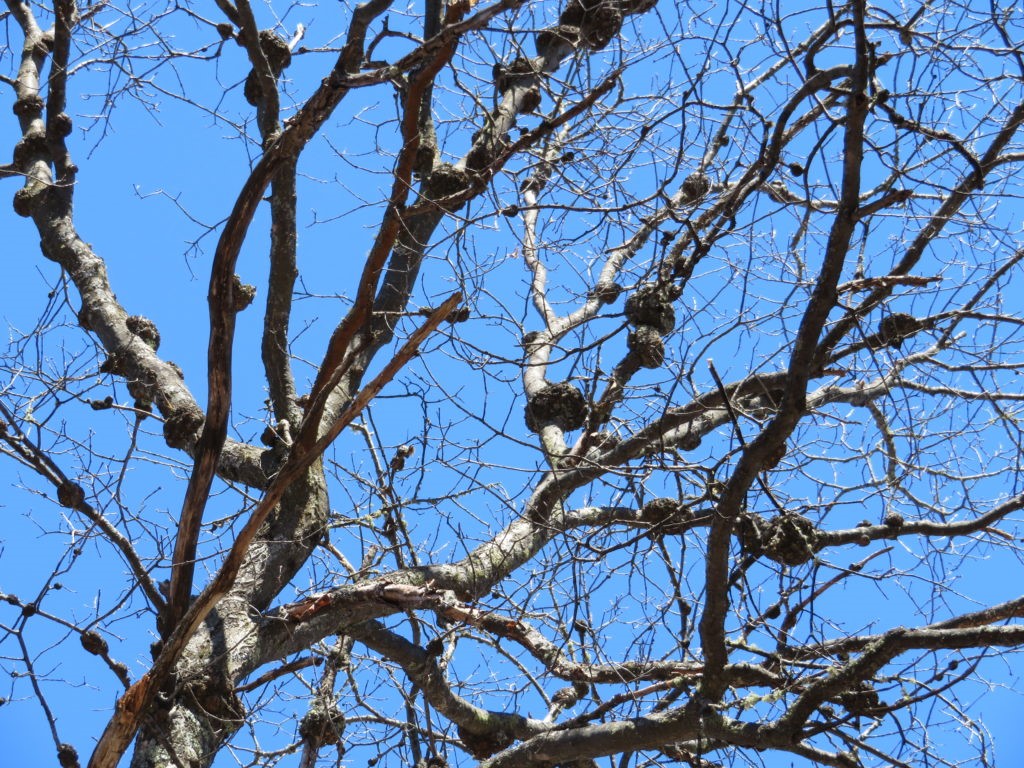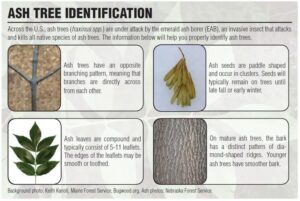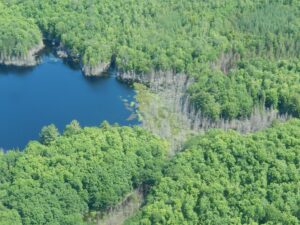By Todd Lanigan, DNR Forest Health Specialist, Eau Claire. Todd.Lanigan@wisconsin.gov or 715-210-0150
Stalactiform stem rust, which occurs in the Lake States and Canada on jack pines, was recently found in western Monroe County. Before this discovery, the only place I have seen stalactiform stem rust in Wisconsin was Adams County in the mid to late 1990s.
Rust diseases can be identified by the galls’ shape and location and by cankers present on the trees. On jack pine seedlings and saplings, stalactiform stem rust can cause elongate swellings on branches or the main stem (trunk).
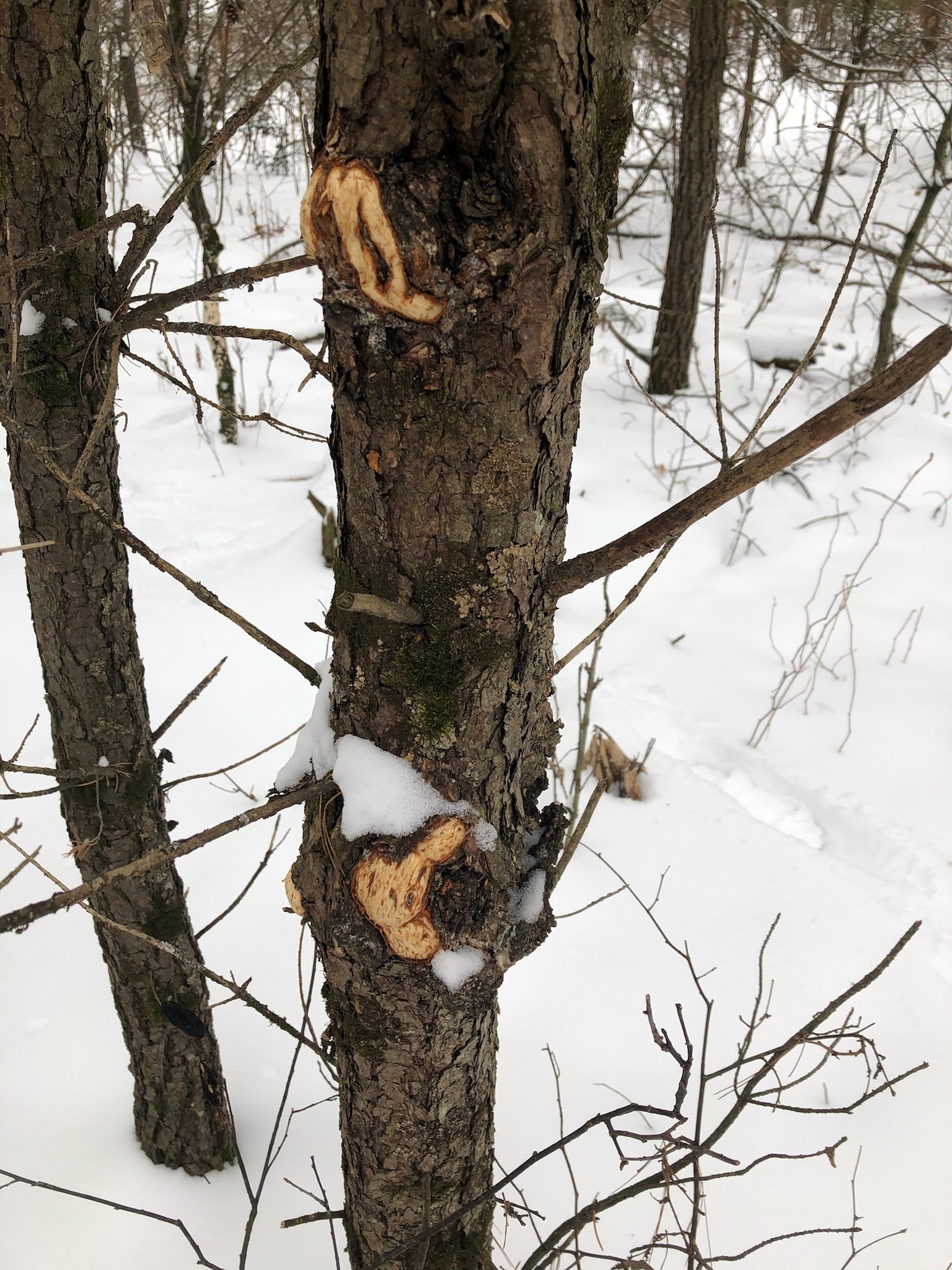
A jack pine with stalactiform stem rust galls that squirrels have chewed on.

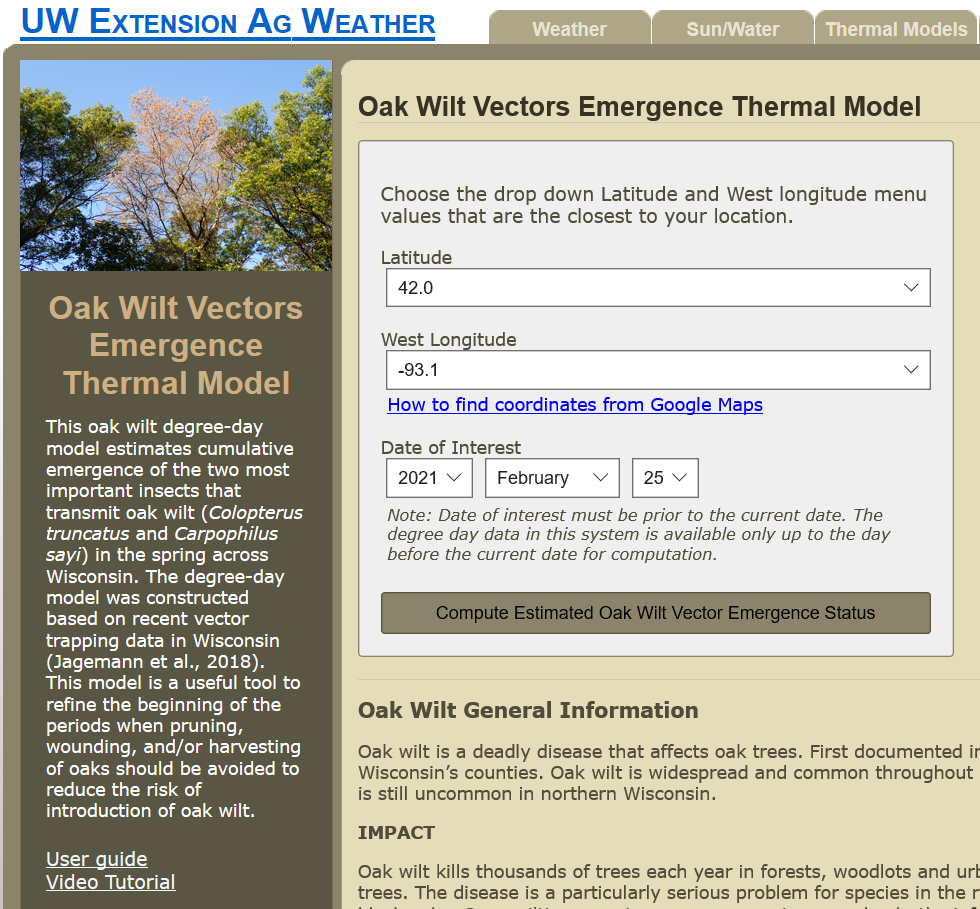 Oak wilt is a serious disease that occurs when insects carrying oak wilt fungal spores land on a healthy oak tree’s fresh wound. To prevent oak wilt infections, it is important to avoid pruning, wounding and harvesting oaks when these insects are abundant, generally April through July.
Oak wilt is a serious disease that occurs when insects carrying oak wilt fungal spores land on a healthy oak tree’s fresh wound. To prevent oak wilt infections, it is important to avoid pruning, wounding and harvesting oaks when these insects are abundant, generally April through July.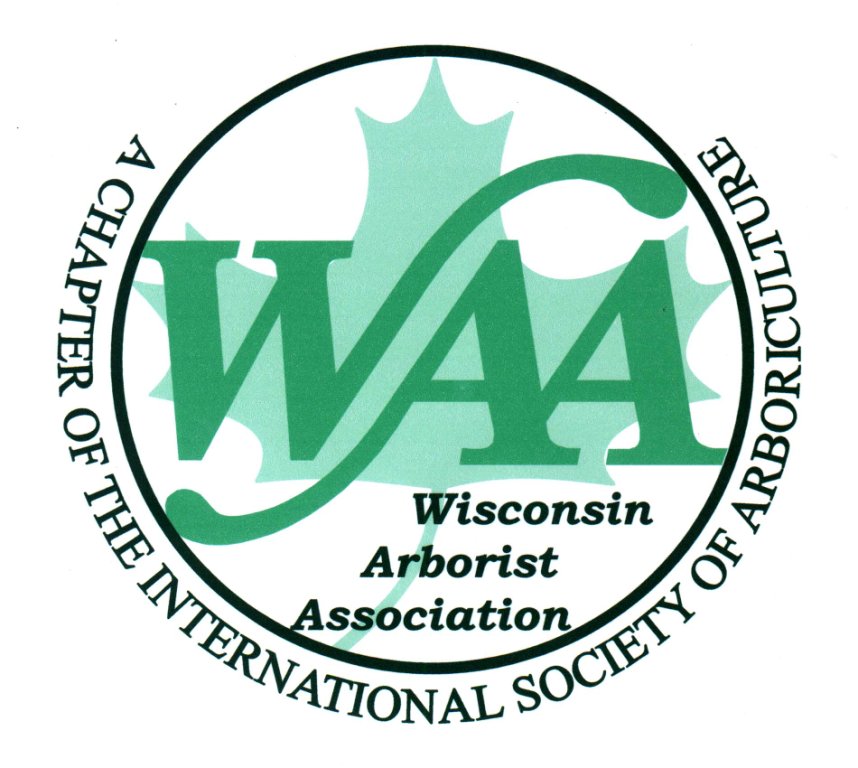 The Wisconsin Department of Natural Resources (DNR) Urban Forestry program will have a virtual booth at the 2021
The Wisconsin Department of Natural Resources (DNR) Urban Forestry program will have a virtual booth at the 2021  The Wisconsin Department of Natural Resources’ Forest Health team recently completed the 2020 Forest Health Annual Report. The report summarizes impacts from pests, diseases and weather on the health of Wisconsin’s forests. Highlights from 2020 include:
The Wisconsin Department of Natural Resources’ Forest Health team recently completed the 2020 Forest Health Annual Report. The report summarizes impacts from pests, diseases and weather on the health of Wisconsin’s forests. Highlights from 2020 include: